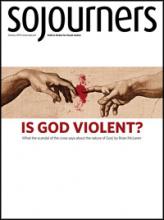I MET ELIZA GRISWOLD in a Starbucks round the corner from her apartment on Manhattan’s Upper West Side. Thrumming with nervy energy, she comes off as smart, ambitious, charismatic, and intensely interested. Griswold has published one book of poetry, Wideawake Field (Farrar, Straus and Giroux). Her poetry and award-winning journalism have been published in The New Yorker, New York Times Magazine, The Atlantic Monthly, The New Republic, and Harper’s. Now in her mid-30s, Griswold grew up in various parts of Pennsylvania and moved to Chicago in 1987, when her father, Frank Griswold, an Episcopal priest, was consecrated as a bishop. (He would later serve as presiding bishop of the Episcopal Church in North America from 1997 to 2006.)
Eliza Griswold’s first full-length prose work is The Tenth Parallel: Dispatches from the Fault Line Between Christianity and Islam (Farrar, Straus and Giroux). In it she recounts her journeys within Nigeria, Sudan, Somalia, Indonesia, Malaysia, and the Philippines. The text, although nicely larded with statistics and historical background, focuses particularly on her encounters with the men and women most vigorously engaged, on one side or the other, in the frequently violent clashes between Christians and Muslims in those countries. Where the book shines is in the way it allows you to take tea with a Jihadi leader and notice his odd habitual gestures, or the fact that he laughs less than the first time we met him. The big picture is illuminated through such exquisitely detailed miniatures.
Richard Vernon: How did you come to cover the places and issues in The Tenth Parallel?
Read the Full Article
